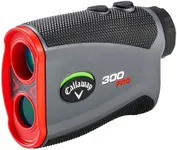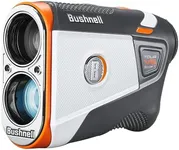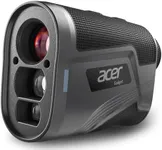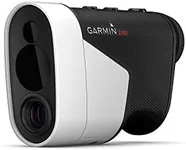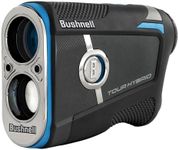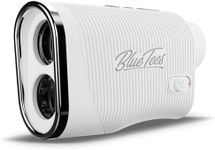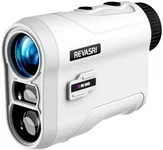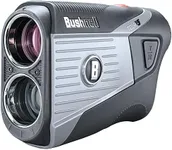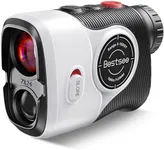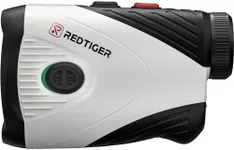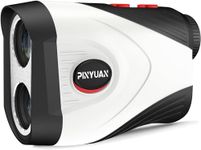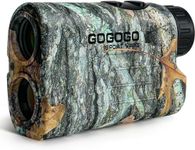Buying Guide for the Best Golf Laser Rangefinders
Choosing the right golf laser rangefinder can significantly improve your game by providing accurate distance measurements to various points on the course. When selecting a rangefinder, it's important to consider several key specifications to ensure it meets your needs and enhances your golfing experience. Understanding these specs will help you make an informed decision and find the best fit for you.AccuracyAccuracy refers to how close the rangefinder's distance measurement is to the actual distance. This spec is crucial because precise distance readings can help you choose the right club and make better shots. Accuracy is usually measured in yards or meters, with most rangefinders offering accuracy within one yard. For casual golfers, a rangefinder with an accuracy of +/- 1 yard is typically sufficient. However, if you are a competitive golfer or play on challenging courses, you might prefer a model with even higher accuracy.
RangeThe range of a golf laser rangefinder indicates the maximum distance it can measure. This is important because it determines how far you can measure distances on the course. Rangefinders typically offer ranges from 400 to over 1000 yards. If you play on standard courses, a rangefinder with a range of 400-600 yards should be adequate. For those who play on larger or more varied courses, a rangefinder with a range of 800-1000 yards or more might be more suitable.
MagnificationMagnification refers to how much closer the rangefinder can make distant objects appear. This is important for clearly seeing the target, especially when it's far away. Most golf rangefinders offer magnification levels between 5x and 7x. If you have good eyesight and play on courses with clear visibility, a 5x magnification might be enough. However, if you often play on courses with lots of obstacles or have difficulty seeing distant targets, a higher magnification like 6x or 7x could be beneficial.
Slope MeasurementSlope measurement is a feature that calculates the angle of elevation or decline and adjusts the distance reading accordingly. This is important for getting accurate distances on hilly courses. Some rangefinders offer slope measurement that can be turned on or off, which is useful for practice rounds and tournaments where slope measurement is not allowed. If you frequently play on courses with significant elevation changes, a rangefinder with slope measurement can be very helpful. However, if you mostly play on flat courses or in tournaments, you might not need this feature.
DisplayThe display of a rangefinder shows the distance readings and other information. This is important for quickly and easily reading the measurements. Displays can be either LCD or LED, with some offering additional features like brightness adjustment or color displays. If you often play in varying light conditions, a rangefinder with a bright, adjustable display can be very useful. For those who play in consistent lighting, a standard LCD display might be sufficient.
Size and WeightThe size and weight of a rangefinder affect its portability and ease of use. This is important for carrying it comfortably during your rounds. Rangefinders come in various sizes and weights, with some being compact and lightweight, while others are larger and heavier. If you prefer to travel light and want a rangefinder that fits easily in your pocket or bag, a compact and lightweight model is ideal. However, if you don't mind carrying a bit more weight for additional features, a larger rangefinder might be suitable.
Battery LifeBattery life indicates how long the rangefinder can operate before needing a recharge or battery replacement. This is important for ensuring your rangefinder lasts through your rounds without interruption. Battery life can vary significantly, with some rangefinders offering several rounds of use on a single charge or set of batteries. If you play frequently or on long courses, look for a rangefinder with a long battery life. For occasional players, a rangefinder with standard battery life should be sufficient.
